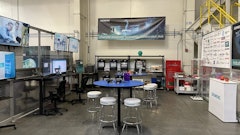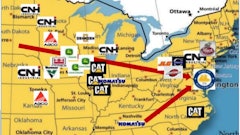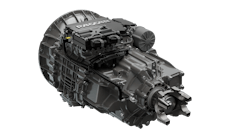
It looks like business is improving, but I am worried. There appears to be a disconnect between the quarterly results of large original equipment manufacturers -- which I can only describe as spectacular -- and the economic news, which can best be described as anemic. Part of this disconnect may be due to the fact that two-thirds of our economy consists of consumer spending, while the other one-third is industrial. The industrial sector has been growing rapidly, propelled by inventory replenishment and export growth due to the low value of the U.S. dollar relative to other currencies.
Second-quarter United States Gross Domestic Product (GDP) was up only 1.9%. Consumer spending growth has been tepid. U.S. unemployment is more than 9% overall, and in the construction sector that number is more than 20%.
The housing market is the culprit on the consumer side. The price of an existing home is now more than $100,000 less than the price of a new home, which is keeping the lid on new home construction. It also prevents home owners from borrowing against their home equity as they did in the run-up to the current recession.
In an attempt to figure out which direction the market is heading today and where it will go next year, I’ve been closely following the major manufacturers’ second-quarter results in addition to talking with suppliers and distributors. The quarterly results for the major manufacturers have been positive. I expected top-line revenues to be up this year, but not as much as they are.
For example, Volvo Construction Equipment’s North American second-quarter 2010 revenues were up 9%, but overall its business was up 67%, driven mostly by robust markets in the so-called BRIC countries (Brazil, Russia, India and China). Caterpillar’s second quarter was up 31%, due in part to BRIC revenue increases, but also due to a 43% increase in its North American revenues. In addition, the company released its dealer survey results that indicate its retail deliveries are up 40% in the June-August survey period compared with the same period in 2009. Deere’s construction and forestry equipment business reported a third quarter (through July) revenue gain of 59%.
The public rental companies, in their 2010 second quarter results announcements, are still reporting revenue declines; however, it's interesting that they have begun to buy new machinery (mostly earthmoving equipment), which I believe is pumping up manufacturer’s sales in the U.S. Deere is rumored to be aggressively selling to the rental companies.
Economists like to give the shape of the GDP curves visual descriptions. Most have said the recovery will not be a V-shape, which would represent a quick jump back to normalcy. Others have described that type of recovery as resembling a hockey stick. Then there’s the "W", which represent a double-dip, which is GDP returning to positive percentages and then dipping back into negative territory. I believe all of the indicators are pointing to a long, slow improvement with the GDP curve resembling a frying pan with several years of sub-par growth.
Housing starts are still at their lowest level in decades and with housing permits (a leading indicator of starts) declining, it is unlikely that starts will improve this year and may take another 12 months before they pass the one million unit mark.
Non-residential construction, a major leading indicator for rental companies, is predicted to decline 11% this year, for the third year in a row.
Heavy construction hasn’t responded to the government’s stimulus program. In fact, the stimulus program has been a big disappointment for the machinery industry.
The bright spot in the North American market is mining. Order backlogs for mining equipment are still growing. For example, Caterpillar is sold out for this year for the mining trucks it builds in Decatur, IL.
I believe we are at the bottom of the current demand cycle in North America. There are four clear signs pointing toward an improvement: First, manufacturers are reporting that their parts sales have increased for the first six months of 2010 by as much as 20% compared with the same period last year. Increasing parts sales usually indicate that equipment owners are reactivating their idle fleets. It is usually the first indication that markets are improving.
Second, distributor inventories are at an all-time low. Manfredi and Associates's market channel checks indicate that distributors are adding small- and medium-sized machines to replenish their depleted inventories. I don’t have an exact measure of distributor inventories, but the U.S. government keeps track of machinery manufacturer inventories that reached their low in March this year (as indicated in the chart).
Third, I believe rental companies and some of the more sophisticated equipment owners (those who own large, professionally managed fleets) are buying new and good used Tier 3-equipped machines ahead of the Tier 4 Interim-engined machines that will begin hitting the market in January of 2011.
Fourth, customers of equipment distributors have increased the amount of equipment they are renting with rental-purchase-options (RPO) transactions. In fact, I believe that most of the reported surge in retail sales demand is for RPOs. Dealers and manufacturers will not know whether the current demand improvements are permanent until the RPOs are converted to sales at the end of December.
As a result of current demand, I have revised upward my 2010 estimate of U.S. retail sales from approximately 2%, which I forecast in December, to slightly less than 12%. My first look at 2011 is for a 10% improvement.
Although the percent changes for the 2010/2011 period is good (up 20% overall), readers should note that U.S. retail sales are between 65% and 70% below the 2005/2006 peak. The 20% market improvement in the 2010/2011 period will bring total industry demand back to the level experienced in 1993. We have a long way to go before we get back to the peak levels experienced in 2005/2006.
##
Frank Manfredi has been a market research consultant to the construction, mining, agricultural and material handling markets for 35 years. His company, Manfredi & Associates, publishes two monthly newsletters Machinery Outlook, for North America, and Machinery Outlook Europe. For more information go to www.machineryoutlook.com, email him at [email protected], or call (847) 922-9816.
U.S. Construction Machinery Retail Sales
(units)
Source: Manfredi & Associates, Inc.


























